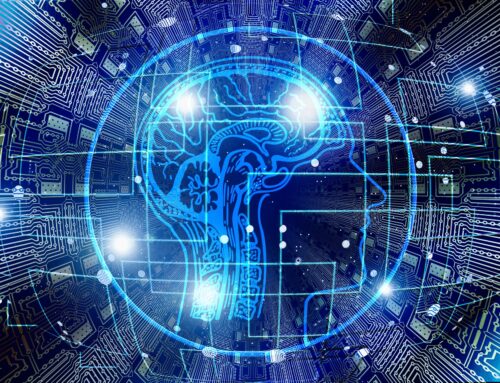A New INSCIght of INformational SCIence
by Jude Currivan, 2018
Abstract
Until now the scientific paradigm of reductionist materialism has maintained that mind somehow arises from matter, that reality is solely physical and that its appearance of separation is real.
Instead, growing evidence is now revealing that the reality of our Universe emerges from more fundamental realms of unified reality and that separation is an illusion.
Reverting to the primacy of mind and consciousness, as espoused by Planck and many other pioneering scientists, it is showing is that universal mind, articulated as digitised information and represented as dynamic and relational patterns and processes of semiotic information, literally in-forms the formation of our Universe.
In addition to increasing indications at all scales of existence and across numerous fields of research that our Universe is innately in-formed, evidence that its appearance is also holographically manifested is mounting too.
When key cosmological attributes are allied with this emerging understanding of the fundamental role of information and the holographic principle, an integral model can be developed in which the ‘Big Breath’ of space expanding and time flowing embodies ever-increasing entropic information and individuated evolutionary complexity and diversity through the finite life-cycle of our Universe.
Contextualised by this perspective, this paper focuses on a new INSCIght of INformational SCIence. Restating two laws of thermodynamics in terms of information (infodynamics), thereby provides general statements of Quantum and Relativity Theories and points to their consequential reconciliation; with emergent energy-matter and space-time being complementary informational expressions, conserved and entropic respectively, and so enabling our Universe to exist and evolve as a unified entity – a finite ‘thought form’ and likely one of many, in the infinite and eternal mind of the Cosmos.
A correlate to this approach is that acceleration is informationally entropic and three key predictions are that:
- Expansion of space is through acceleration or deceleration – never at constant velocity
- All forces (including gravity) are informationally entropic
- Gravity is not quantized
This paper deliberately excludes any mathematical notation as the mathematical formalism of the laws of physics are already articulated. The new INSCIght of INformational SCIence, the restatement of thermodynamics to infodynamics and the consequential opportunity to reconcile Quantum and Relativity Theories as Marcel Proust describes the process of discovery is rather to ‘see with new eyes’.
Information is physically real
Scientific evidence at all scales of existence and across numerous fields of research is discovering that our Universe is fundamentally interconnected, interdependent and ultimately unified1, 2, 3, 4, 5, 6
Whilst apparently solid, physicists have realised for many years that the physical world is incredibly ephemeral. And an experiment reported in 2012 demonstrated the fundamental nature of information by showing that deleting one digitised bit, releases actual physical heat and in line with theoretical predictions7.
This and many other examples of increasingly compelling evidence1 are showing that such digitised information, the basis for all our technologies, is exactly the same as universal information, also articulated as digitised bits, that underpins and literally makes up all physical reality.
Key attributes of our Universe
The following key attributes of the physical reality of our Universe are being progressively supported by cosmological and other evidence.
Spatially, it is geometrically flat8 and otherwise mathematically the equivalence of energy and matter would be violated9.
It is finite10. Beginning as a finite event 13.8 billion years ago, the WMAP analysis of CMB wavelength distribution has a finite cutoff11 and on a logical basis there are no infinite physical quantities within space-time. In addition, the great majority of hydrogen in our Universe has already been processed into stellar nucleosynthesis12 and the reducing temperature of ambient space (currently at 2.7° K) both suggest a finite end.
It is closed/isolated in space-time otherwise universal conservation of energy-matter would be violated.
Space expands and time flows from their finite origin.
It is nonlocally integrated. Bell’s Theorem requires this for Quantum Mechanics to work and nonlocal entanglement has been experimentally demonstrated to 600 light years from Earth13
Key Premise of our Universe
Supported by a theoretical frame-work14 and evidence at all scales of existence and across numerous fields of research1 with digitized information pixelated at the Planck scale area15 of the 2D holographic boundary/brane of space-time, the reality of our Universe is manifested holographically. The first direct cosmological evidence for this was demonstrated in 201716.
Whereas a hologram captures information about an object onto a 2D film, then projects it to create the holographic appearance of the 3D object – cosmologists are realising that our entire Universe takes information held on its 2D boundary and holographically projects it to create the 3D appearance of reality.
The latest scientific evidence is revealing that our Universe is a ‘cosmic hologram’ that exists and evolves as a unified and finite thought form in the infinite mind of the Cosmos.
Restating and expanding two laws of thermodynamics to laws of information (infodynamics)
Based on these key attributes and premise the laws of thermodynamics can be restated and expanded as laws of information (infodynamics):
Restating the 1st Law of Thermodynamics to a 1st Law of Infodynamics
The 1st Law of Thermodynamics states that the total energy of a closed system is conserved.
As:
- Our Universe is a closed/isolated system
- Energy and matter are equivalent – E=mc2
The total energy-matter of our Universe is conserved.
As Quantum Theory is a description of universal energy-matter, this is its most simple and generalized statement.
- Information is physically real and can be expressed as energy-matter
Thus, information expressed as the energy-matter of our Universe is universally conserved.
Leading to the 1st Law of Infodynamics, which states that information expressed as the total energy-matter of our Universe is conserved.
Restating the 2nd Law of Thermodynamics to a 2nd Law of Infodynamics
The 2nd Law of Thermodynamics states that the total entropy of a closed system always increases over time.
As:
- Our Universe is a closed/isolated system
- Relative time and space are combined as invariant space-time
- Space-time began in a state of lowest entropy17
The total entropy of our Universe always increases over space-time.
As Relativity Theory is a description of space-time, this is its most simple and generalized statement.
- Information can also be expressed entropically as the information content2 of a system
- Our Universe is manifested holographically with digitized information pixelated at the Planck scale and encoded on its 2D boundary/brane
Thus, time flows and space expands to entropically express ever more informational content within space-time.
The flow of time itself is the entropic accumulation of the informational content of our Universe.
Leading to the 2nd Law of Infodynamics, which states that the informational content/ entropy of our Universe expressed as space-time always increases.
As for their thermodynamic subset, the two laws of infodynamics are both required to describe the fundamental nature of our Universe and show how Quantum and Relativity Theories complement and so can be reconciled with each other.
Essentially the 1st Law of Infodynamics enables our Universe to exist; the 2nd Law enables it to evolve.
Correlates and predictions
A correlate to this approach is that acceleration is informationally entropic: our Universe expresses lees informational content yesterday than it does today and will tomorrow and so on from the beginning to the end of its finite life-cycle. So, acceleration and all forces are innately entropic through their most simple articulation of F=ma.
Given the informational entropic nature of space-time, a key prediction is that the expansion of space is thus through acceleration or deceleration – never at constant velocity.
This approach also predicts that as gravity is identical with acceleration that whilst entropic, it is not quantized.
References
- Currivan, J. The Cosmic Hologram: In-formation at the Center of Creation (Inner Traditions, 2017). Winner of silver Nautilus book award 2017 for science and cosmology
- Vedral, V. Decoding Reality – the universe as quantum information (Oxford University Press, 2010)
- Radin, D. Real Magic: Ancient Wisdom, Modern Science and a Guide to the Secret Power of the Universe (Harmony, 2018)
- Gober, M. An End to Upside Down Thinking (Waterside, 2018)
- Elgin, D. The Living Universe (Berrett-Koehler, 2009)
- Talbot, M. The Holographic Universe (HarperCollins, 1996)
- Bérut, A., Arakelyan, A., Petrosyan, A., Ciliberto, S., Dillenschneider, R. and Lutz, E. Experimental verification of Landauer’s principle linking information and thermodynamics. Nature, 483, 187-189 (2012). Science. 334(6060):12536. doi: 10.1126/science.1211914 (2011)
- https://map.gsfc.nasa.gov/universe/uni_shape.html
- https://www.amazon.co.uk/Why-Does-mc2-Should-Care/dp/0306819112/ref=sr_1_1?ie=UTF8&qid=1525351201&sr=8-1&keywords=why+e+mc2
- https://link.springer.com/article/10.1007%2FJHEP04%282018%29147
- https://arxiv.org/abs/astro-ph/9804041
- D. Sobral, I. Smail, P. N. Best, J. E. Geach, Y. Matsuda, J. P. Stott, M. Cirasuolo, J. Kurk. A large Hα survey at z=2.23, 1.47, 0.84 & 0.40: the 11 Gyr evolution of star-forming galaxies from HiZELS. Monthly Notices of the Royal Astronomical Society.
- https://news.mit.edu/2017/loophole-bells-inequality-starlight-0207
- https://en.wikipedia.org/wiki/Holographic_principle
- https://en.wikipedia.org/wiki/Bekenstein_bound
- Afshordi, N., Corianò, C., Delle Rose, L., Gould, E. and Skenderis, K. From Planck Data to Planck Era: Observational Tests of Holographic Cosmology. Physical Review Letters, 2017; 118.041301
- Greene, B. The Hidden Reality (Penguin, 2011)


